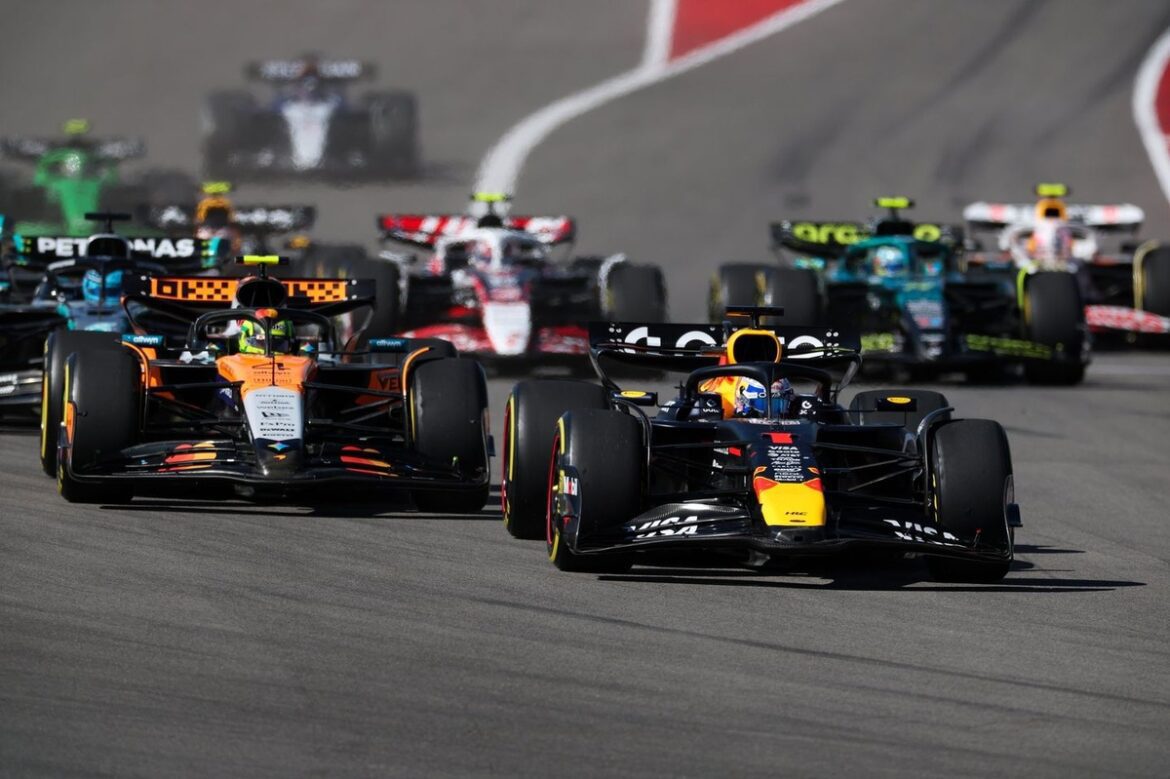George Russell Reflects on Formula 1 Racing Dynamics After the U.S. Grand Prix
In the aftermath of the recent United States Grand Prix, George Russell shared his thoughts on the current state of Formula 1 racing, expressing his dissatisfaction with how qualifying and the race start greatly influence race outcomes. The Mercedes driver finished in sixth place, having lost positions right from the start. Most drivers opted for a one-stop strategy during the race, which made it challenging for Russell to regain his position through strategic maneuvers.
Max Verstappen once again showcased his dominance by winning the Austin race, marking the thirteenth time this season that a driver has taken victory from pole position. This statistic highlights a trend in the current racing landscape, with only six races this year being won by drivers starting from other positions on the grid.
The Importance of Qualifying
Russell articulated his frustrations during an interview with Sky Sports F1, stating, “Right now in F1 it’s a race to Turn 1.” He pointed out that the lack of tire degradation means that the competitive gap between the fastest and slowest cars is minimal—only three-tenths of a second separated the top six cars. Typically, to execute an overtaking maneuver, a driver would need a gap of at least half a second. Russell emphasized that had he exited Turn 1 in third place instead of sixth, he would likely have secured a podium finish.
During a follow-up discussion with print media, Russell elaborated on how tire performance plays a critical role in overtaking opportunities. He noted that the tight competitive order among teams like Red Bull, McLaren, Mercedes, and Ferrari further complicates overtaking, as all teams are effectively fighting for the same spots on the podium. During qualifying, the top six drivers were separated by just half a second, underscoring the competitive nature of the grid.
The Challenge of Overtaking
Russell highlighted the issue of tire degradation, or rather the lack of it, as a primary factor contributing to the limited overtaking experienced in recent races. He stated, “The thing is now when there’s no tire degradation, there’s no tire delta.” This situation creates a scenario where drivers struggle to find opportunities to pass one another. Russell remarked that he couldn’t recall the last time there was a two-stop race, which typically allows for more strategic overtaking.
Despite his criticisms, Russell was careful not to place blame on Pirelli, the tire supplier for Formula 1. He acknowledged that Pirelli has developed a tire that enables teams to successfully implement a one-stop strategy at many circuits, which is a testament to their engineering capabilities. “Pirelli get a hard time no matter what,” he pointed out. “There’s lots of tire degradation; people say it’s not real, the drivers can’t push, we have to manage.”
Balancing Performance and Strategy
Russell explained that fans often express a desire to see more overtaking and excitement during races, yet when tire degradation is high, complaints arise about the inability to push the car to its limits. The conundrum lies in finding the optimal balance between tire performance and race excitement. Russell suggested that an ideal tire would allow drivers to race aggressively but would also degrade sufficiently after a certain number of laps to necessitate pit stops, thereby enhancing strategic variability within races.
He described his vision for tire performance: “Ideally, the soft tire does 12 laps, the medium tire does 15 laps, and the hard tire does 20 laps before it falls off a cliff.” However, he acknowledged that achieving this balance is easier said than done. “Pirelli get a very hard time; they do their best, they have given us a substantially better tire, but it causes bad racing,” he added.
Looking Ahead to the Final Races of the Season
Russell’s concerns extend to the remaining races of the 2025 season, which includes events in Mexico, Brazil, Las Vegas, Qatar, and Abu Dhabi. He expressed skepticism about the potential for improvement in race dynamics, emphasizing that the outcome of qualifying will be crucial in determining race results. “Qatar and Vegas realistically are our two best shots, but again, it all just comes down to the lap in qualifying,” he remarked.
He reiterated that a strong qualifying performance is essential for drivers to secure advantageous positions on the grid. If a driver achieves a solid lap and starts from the front row, they are more likely to maintain their position during the race. Conversely, if they do not perform well in qualifying, they could face the same challenges in races like Mexico.
The Competitive Landscape of Formula 1
The current competitive landscape of Formula 1 has seen a convergence of performance among leading teams, which makes overtaking increasingly difficult. Russell’s perspective sheds light on the intricacies of racing in an environment where the margins are razor-thin, and strategy plays a pivotal role in outcomes. With teams like Red Bull, McLaren, Mercedes, and Ferrari all vying for podium finishes, the competition has intensified, making every lap and every decision critical.
As teams prepare for the upcoming races, the focus will remain on the interplay between qualifying performance and race strategy. Russell’s insights reflect a broader sentiment within the paddock: that a shift in tire performance dynamics could enhance the overall excitement and unpredictability of races, thereby creating more opportunities for overtaking.
In conclusion, George Russell’s comments following the United States Grand Prix highlight the ongoing challenges faced by drivers and teams in Formula 1 today. As the season progresses, the emphasis on qualifying and race strategy will continue to shape the competitive landscape, making it essential for teams to adapt and innovate in order to succeed in this high-stakes environment. The evolution of tire performance and its impact on race dynamics will be a crucial area of focus for all stakeholders in the sport as they look to enhance the overall racing experience for fans and competitors alike.
